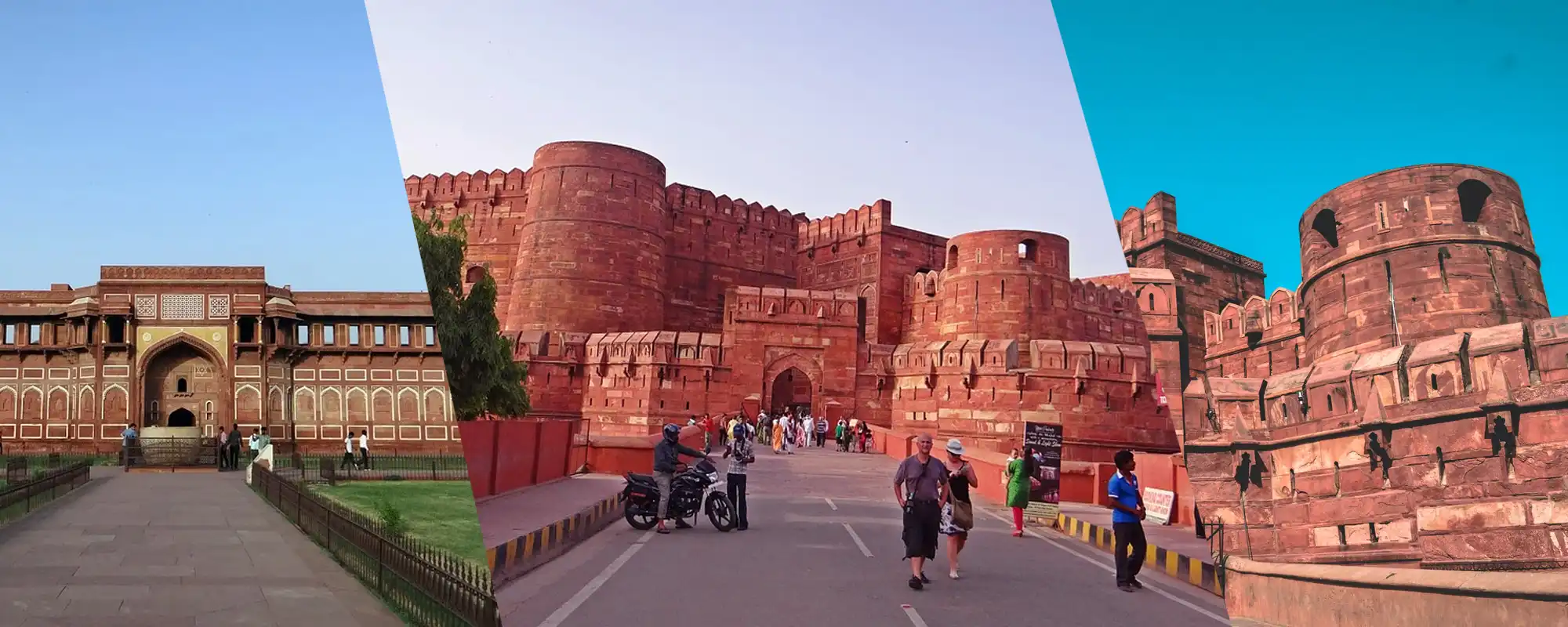
The Red Fort of Agra or Agra Fort is an architectural masterpiece. It was built by Emperor Akbar in 1573 and is located on the right bank of the river Yamuna. This beautiful fort is made entirely of red sandstone. The historical fort was once the erstwhile residence of the Mughals until 1638 and is now one of the UNESCO World Heritage Sites. It lies 2.5 kilometres from Taj Mahal.
Agra Fort is an epitome of the Majestic Mughal Dynasty. The fort is so massive that it is often referred to as a walled city. It is the perfect example of Mughal art and architecture, built purely out of red sandstone. Within the premises of Agra Fort lie the most exquisite structures like the Pearl Mosque, Diwan-I-Khas, Diwan-I- Aam, Moti Masjid and Jahangiri Mahal. Some part of the Agra Fort is used by the Indian Army is off-limit to public access. View of Yamuna River and Taj Mahal from the fort's pavilions is mind-stirring.
A massive red-sandstone fort located on the banks of River Yamuna was built under the commission of Emperor Akbar in 1565 and was further built by his grandson Shah Jahan. The fort, semicircular on plan, is surrounded by a 21.4 m high fortification wall. The fort was built primarily as a military structure; parts of it are still reserved under Indian Army. Later on, it was transformed it into a palace, it also became a gilded prison for eight years after his son Aurangzeb seized power in 1658. The fort houses a maze of buildings, including vast underground sections. The Amar Singh Gate to the south is the sole entry point.

The Agra Fort was built by the Mughal Emperor Akbar. The Fort is made of Red sandstone which was brought all the way from Rajasthan and that was laid on the external surfaces. The architecture of the Fort is Islamic.
TICKET FARE – The entry ticket to explore the Agra Fort is not expensive at all. You can get a ticket for a meagre amount of INR 35 per person. However, the ticket price for foreigners is INR 550. Children do not require tickets.
TIMING – You can visit the Agra Fort any time between sunrise to sunset.
The best time to visit Agra Fort is during autumn and winter seasons between the months of November and February.
The Agra Fort is located just 2.5 km away from the opulent Taj Mahal hence it is a very good idea to combine these two destinations together. The nearest railway station to the Red Fort of Agra is, of course, Agra Cantonment or Agra Cantt as it is more commonly known as. If you are a first-time traveller to Agra, get down at the station and make your way to the prepaid booth in order to book a transport - Cab or Rickshaw - at a reasonable price. The taxi fare is usually between INR 200 - 300 as the distance between the station and the fort is around 13 km.

A UNESCO World Heritage Site, Agra Fort, also called Red Fort, was established during the rule of the Mughal Emperor Akbar in 1573 and depicts the grandeur of the architecture in historic India. Located on the banks of Yamuna River, this red sandstone structure houses some exquisite structures such as Pearl Mosque, Diwan-I-Khas, Diwan-I-Aam, Jahangiri Mahal, and Moti Masjid within its premises.
Agra Fort is open daily from sunrise until sunset. The best time to go is from November to February, when the weather is dry and not too hot.
There are a number of monumental structures that one can see and be amused with in the Agra Fort. Some of these are Jahangir Mahal, Akbari Mahal, Sheesh Mahal, Khas Mahal etc.
Copyright 2012-2025 Indiamap Digital Private Limited. All rights reserved. Privacy Policy | Terms of Use